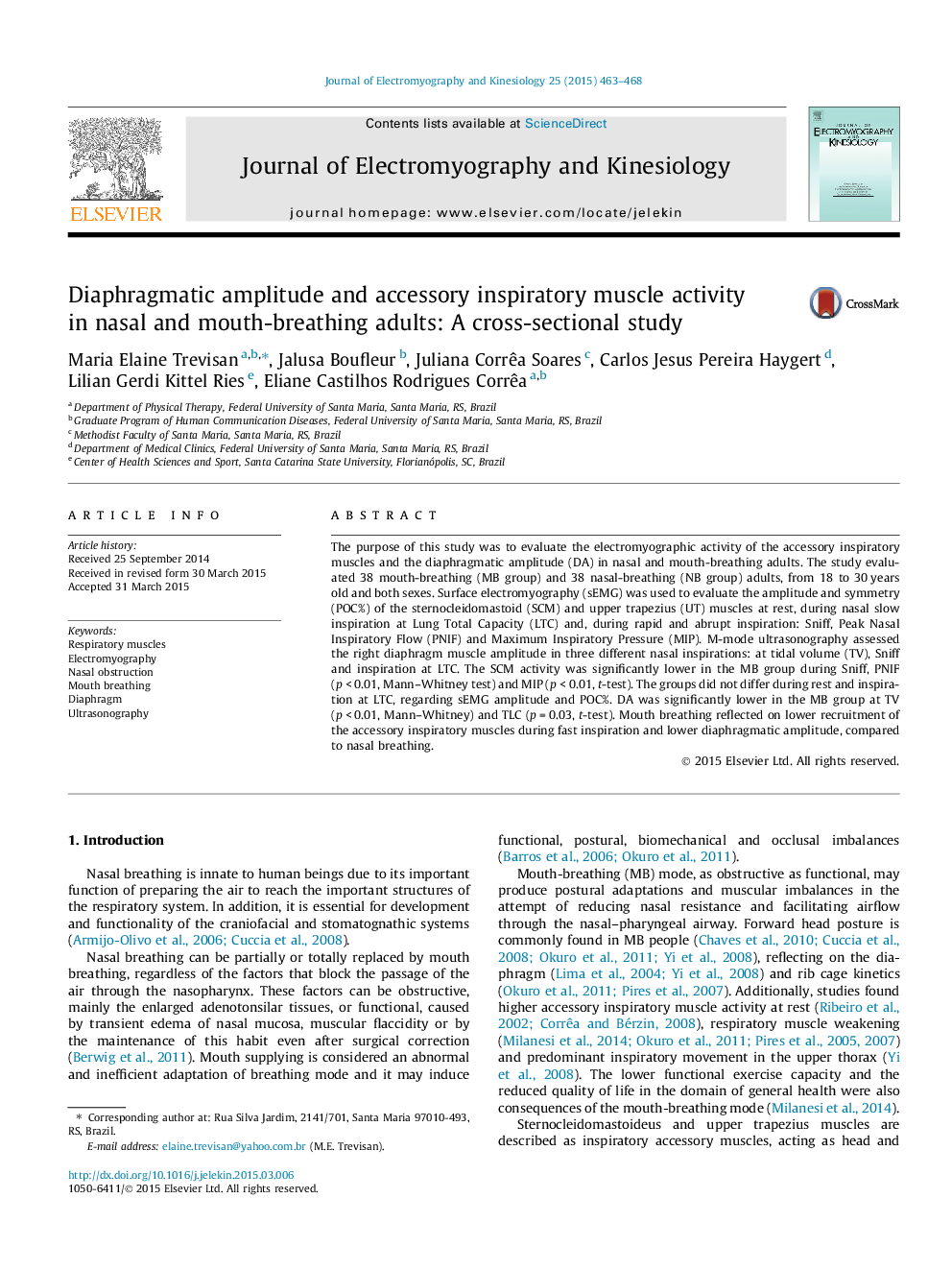| Article ID | Journal | Published Year | Pages | File Type |
|---|---|---|---|---|
| 6210292 | Journal of Electromyography and Kinesiology | 2015 | 6 Pages |
The purpose of this study was to evaluate the electromyographic activity of the accessory inspiratory muscles and the diaphragmatic amplitude (DA) in nasal and mouth-breathing adults. The study evaluated 38 mouth-breathing (MB group) and 38 nasal-breathing (NB group) adults, from 18 to 30 years old and both sexes. Surface electromyography (sEMG) was used to evaluate the amplitude and symmetry (POC%) of the sternocleidomastoid (SCM) and upper trapezius (UT) muscles at rest, during nasal slow inspiration at Lung Total Capacity (LTC) and, during rapid and abrupt inspiration: Sniff, Peak Nasal Inspiratory Flow (PNIF) and Maximum Inspiratory Pressure (MIP). M-mode ultrasonography assessed the right diaphragm muscle amplitude in three different nasal inspirations: at tidal volume (TV), Sniff and inspiration at LTC. The SCM activity was significantly lower in the MB group during Sniff, PNIF (p < 0.01, Mann-Whitney test) and MIP (p < 0.01, t-test). The groups did not differ during rest and inspiration at LTC, regarding sEMG amplitude and POC%. DA was significantly lower in the MB group at TV (p < 0.01, Mann-Whitney) and TLC (p = 0.03, t-test). Mouth breathing reflected on lower recruitment of the accessory inspiratory muscles during fast inspiration and lower diaphragmatic amplitude, compared to nasal breathing.
